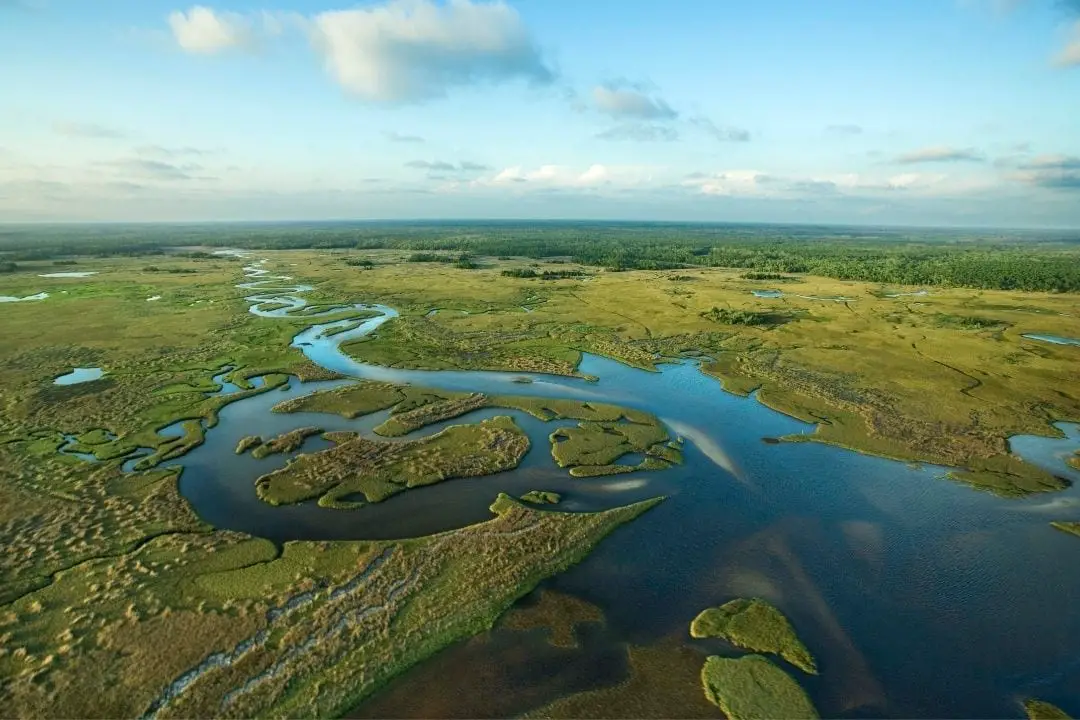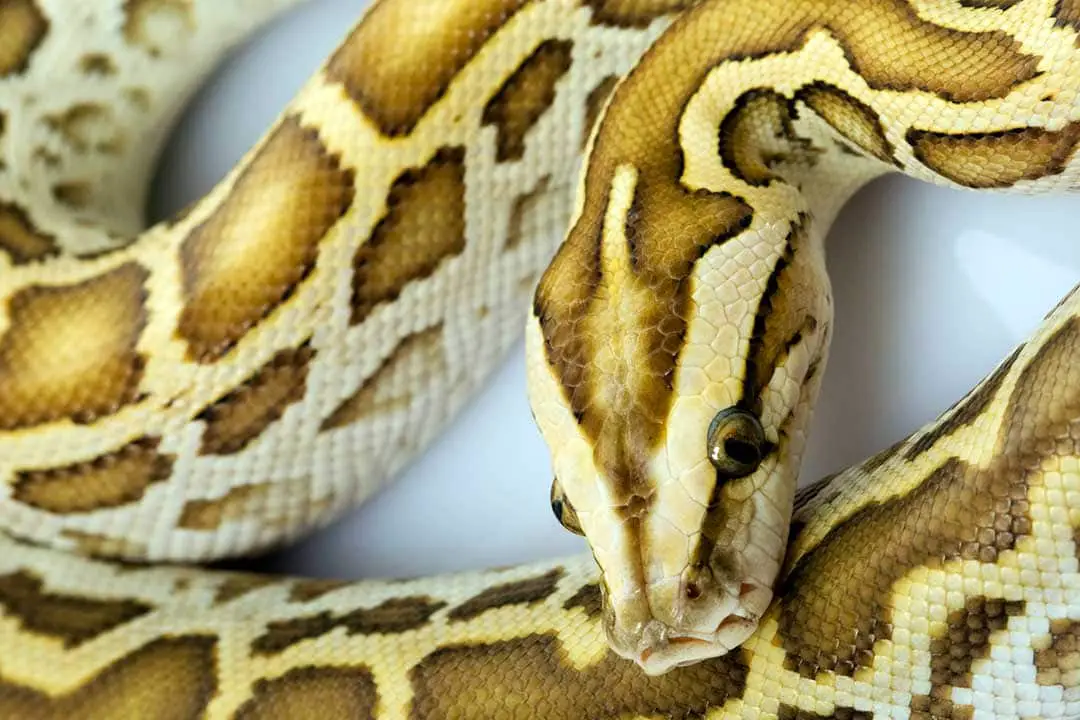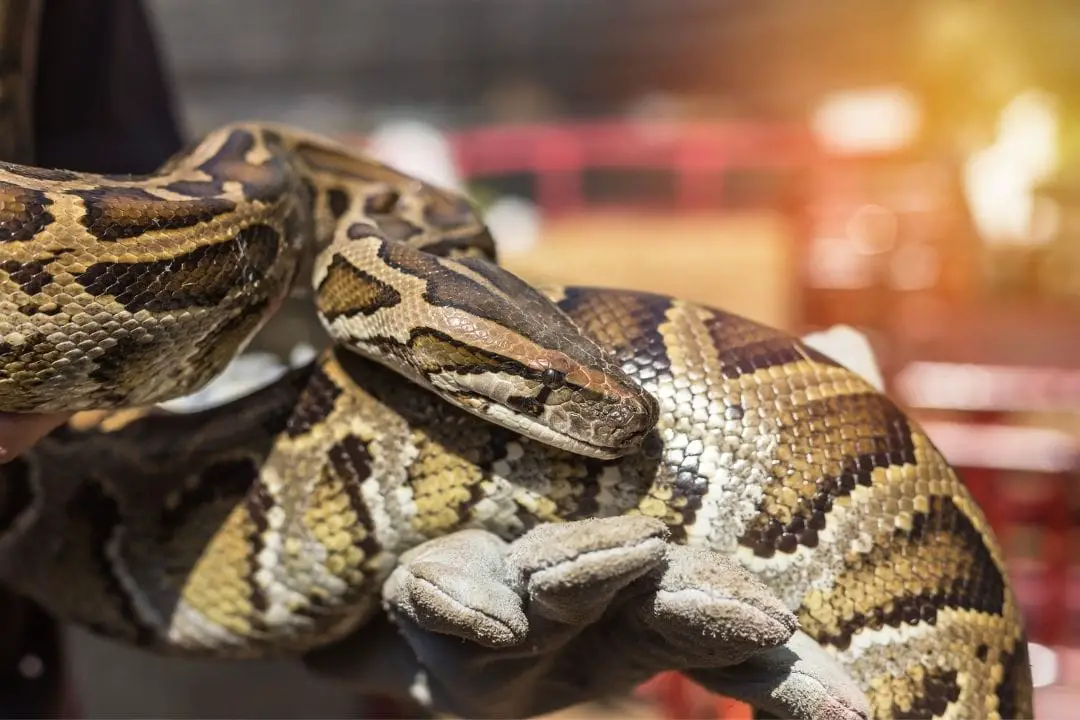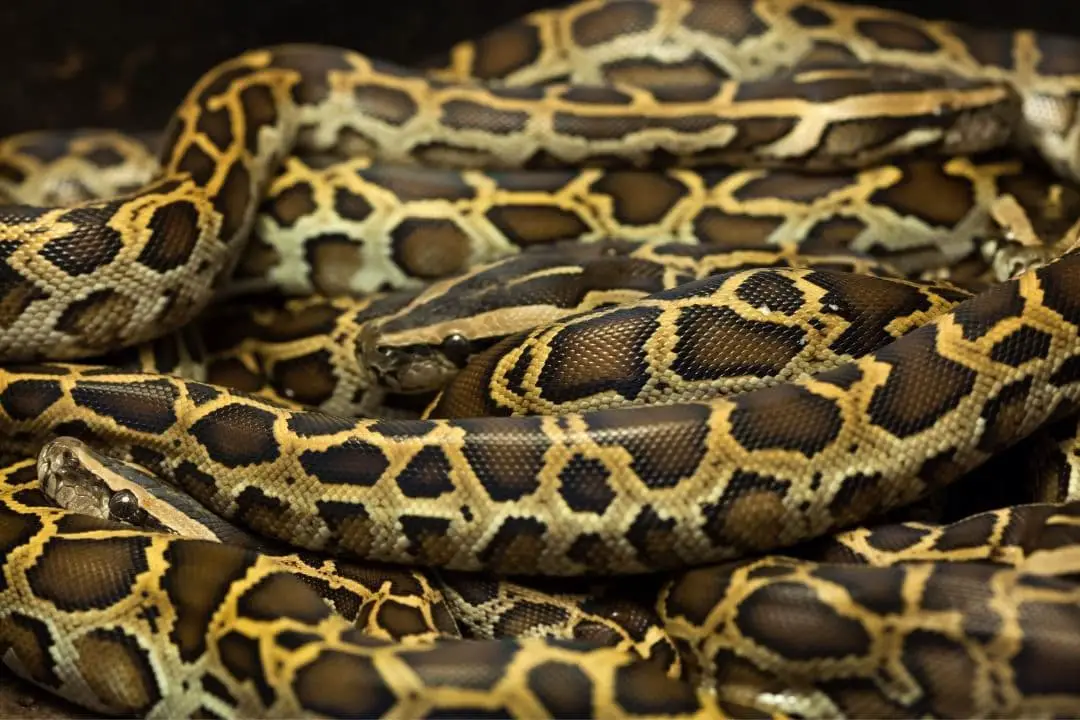Burmese pythons (Python bivittatus) are popular pet snakes, but are likely most famous for taking over the Florida Everglades.
These massive predators took less than 20 years to become an invasive species that will likely never be eradicated. So, how did this happen?
The Beginning
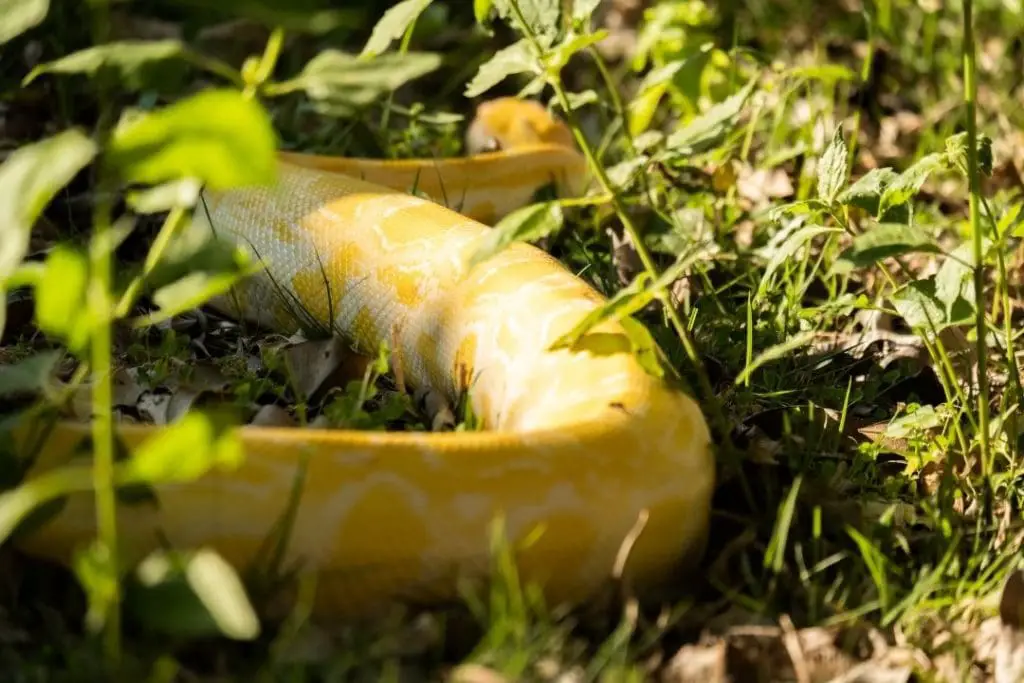
The first thing to understand is how the Everglades were before the population was established. Rapid development of the surrounding lands and draining for development put major stress on the Everglades for over a century.
Everything from wide-scale hunting for feathers to sugar cane farming had already caused massive damage to this wetland.
By the 70s, the damage was obvious and efforts were made to save the area to preserve the water source of cities like Miami and Naples.
Miami in the 80s became a hub of the exotic reptile trade. The Burmese python was popular for its impressive size and gentle temperament.
During this time, there were few laws governing the import and sale of reptiles. Many animals were either imported in bred in facilities popping up through the area.
Burmese pythons were first spotted in the Everglades during the 1980s. These were scattered sightings, likely released or escaped pythons.
However, these snakes were too scattered to create a viable breeding population. The real hit came in 1992. Huricane Andrew devastated Florida and became the one of the most expensive and powerful storms to hit the state.
The winds were strong enough to rip off roofs and destroy whole buildings.
One of these buildings was a breeding facility that included Burmese pythons. Just 10 days after the storm witnesses reported sightings of many species of large and nonvenomous snakes that had escaped their enclosures in southern Dade county.
A large population of adult snakes was now in the wild. Had this happened further north, the snakes likely would not have survived the winter.
Most of the continental United States is not warm or humid enough for these snakes to survive. However, the Everglades is nearly a perfect habitat.
Establishing
Very little was done about these escaped snakes. They were not considered a threat at the time, so nothing was done. It likely wasn’t obvious just how much damage these snakes could do.
Sadly, these snakes found an area that is very similar to their home range. Burmese pythons need temperatures over 80 degrees for most of the year and humidity between 60 and 80 percent to thrive. Hot and muggy Florida is a perfect habitat.
The fact that the Everglades is basically a slow-moving river does not help. Burmese pythons are excellent swimmers and stay near the water if possible.
They can submerge for over half an hour. They are also nearly impossible to see against the background thanks to a pattern that hides them in leaf litter, bushes, and shallow water.
The Everglades is a water system that includes the river and surrounding flooded areas. The limestone that makes up the base of the ecosystem forms islands that make for perfect nests for Burmese pythons.
Most animals in the area are not aware of large snakes as potential predators. Burmese pythons will eat large reptiles, but they prefer small- and medium-sized warm-blooded animals like wading birds and rabbits.
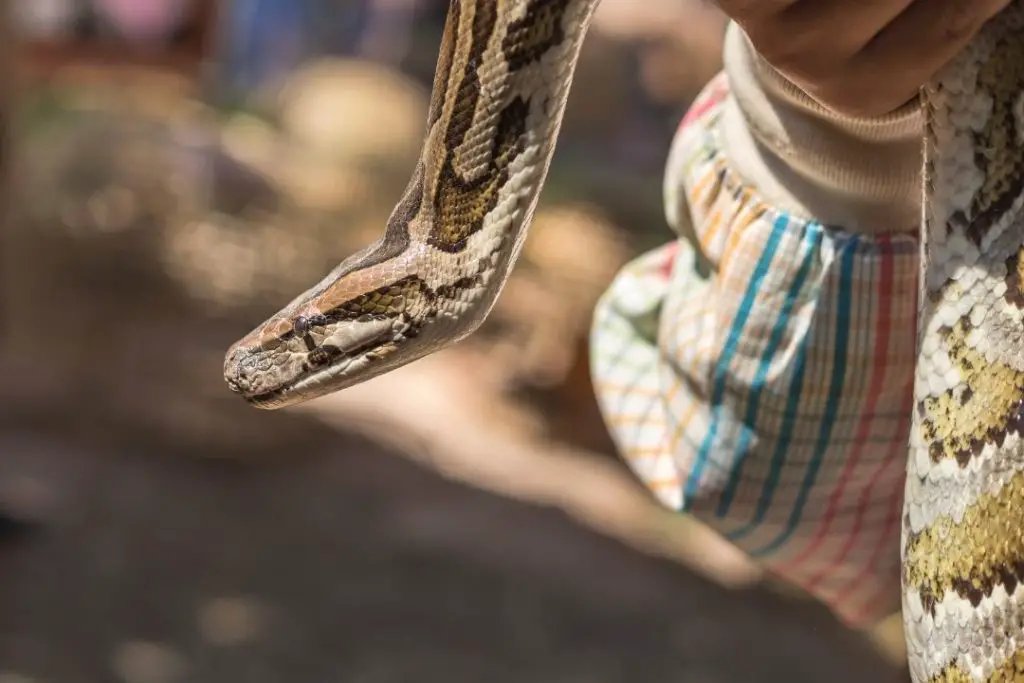
Back in the 90s, the Everglades had huge populations of exactly these prey animals. There were marsh rabbits, opossums, foxes, bob cats and more.
The Everglades are also one of the largest nesting grounds for migratory birds in the country. All of these animals became the food source for the burgeoning python population.
In just a decade, populations of marsh rabbits, opossums, foxes and raccoons dropped over 90%. Some animals have vanished entirely. The stomach contents of captured pythons include claws and feathers from many of these species.
Burmese pythons overwhelmed the local ecosystem. They start off at around 22 inches long. By two years of age, these snakes will be close to ten feet.
This means they rapidly grow beyond what any local predator can take down. Very little eats these snakes. Alligators are the only major predator.
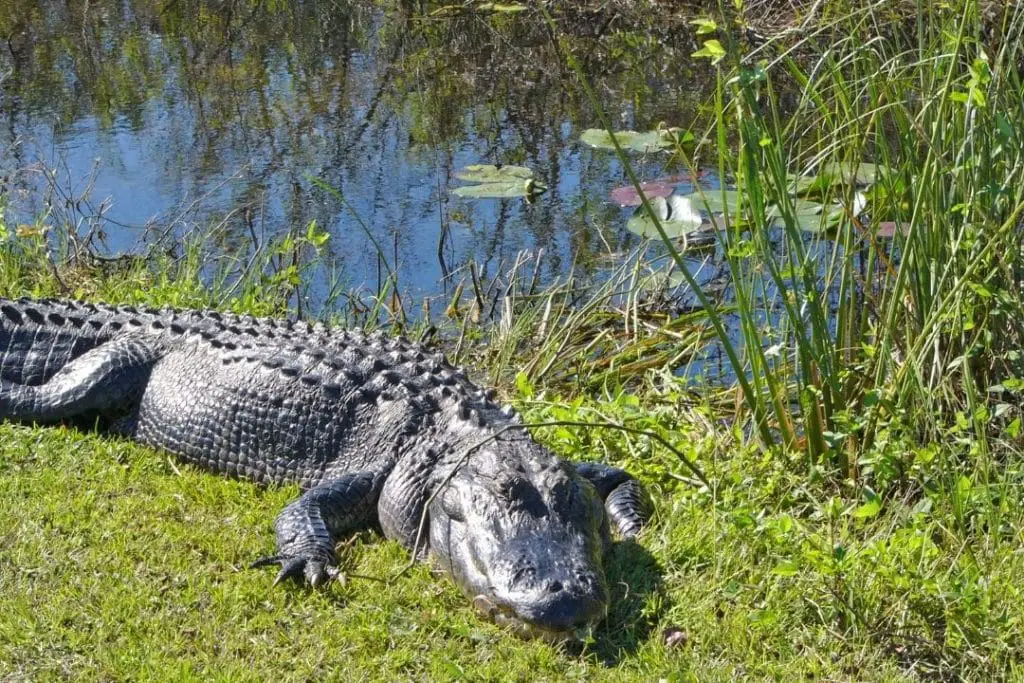
Once the snake reaches 10 feet, they are too big for the average alligator to take them down. These snakes can live for over 10 years in the wild.
This means that very few reproductively active snakes are dying on their own every year. One female python can lay 50-100 eggs in a single year.
While winter has kept them mostly contained, some snakes are finding animal burrows that help them survive cold weather. This gives them the potential to move further north if they can find enough burrows.
By 2000, the population of Burmese pythons were considered to be established. They had created a growing population that has resulted in tens to hundreds of thousands of snakes in the Everglades.
Efforts to control the snakes began around this time. It is currently legal to hunt Burmese pythons year-round. However, this wasn’t the case initially.
Most early programs to control these massive predators didn’t go well. The natural wild coloration of Burnese pythons makes them very difficult to see.
Careful hunters can spot them by the shine of their scales, but they are very stealthy animals. It takes an experienced hunter to spot them.
Combine the fact that these are powerful animals that will defend themselves, and they are hard to take. This is figuring they can be found.
Snakes are very good at hiding. Even massive animals are capable of squeezing into tiny areas where you would never expect a huge animal to hide.
The old methods require driving through the Everglades or using a boat or helicopter.
There are very few roads and most of the area is not easily reached by humans. Limestone outcrops can shelter female snakes guarding eggs and are virtually inaccessible unless you have an airboat or helicopter.
This is labor-intensive and doesn’t produce that many captured snakes.
Current Status
As of right now, it is unlikely that pythons will ever be fully removed, and are now one of the snake species found in Florida.
While new advances such as sentinel snakes help, there is only so much they can do.
Currently, the old methods and a few high tech solutions are being tried. The sentinel snakes are large adult males that are implanted with a radio tracker.
Male Burmese pythons are very good at finding breeding females. By following the snake during the breeding season, the female and any other males can be captured and euthanized.
Future ideas include genetic engineering. By releasing male snakes that can only produce males or have a defect that kills females, they are hoping to reduce the breeding population over time.
However, this is not currently feasible. Control measures are being taken to try to reduce the snake population before they wipe out more species.
Large adults are capable of consuming deer and alligators. Since small mammals are becoming rare, these may be next on the menu.
Until a solution is found, it is unlikely the normal diversity of the Everglades will return.
What You Can Do
While it is easy to lose hope, there are ways anyone who lives nearby can help. The first is to report any snake sightings. Any animal taken out of the wild is good.
You can also help biodiversity in your region by learning about invasive animals and learning to tell them apart from natives.
The Argentine black and white tegu (Salvator merianae) is encroaching on the Everglades. These animals love alligator eggs and are perfectly capable of wiping out a colony.
They are currently possible to control if they are trapped consistently. Other invasive species are also a threat to Florida’s ecosystem.
Reporting sightings can help protect the native animals and prevent another python situation.
If you are thinking about owning a burmese python as a pet, please think this through and read about burmese python care here to know what to expect.
Invasive animals and plants are a problem in many parts of the world.
By reporting them and advocating for more funding and attention, you can help protect your local area for future generations.
